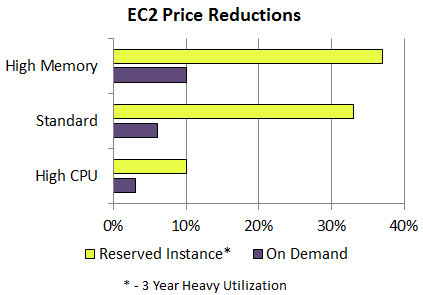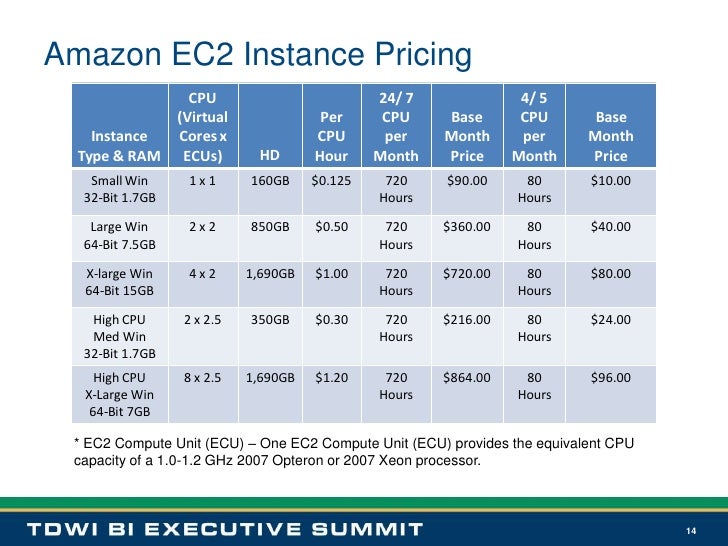

Applications that have flexible start and end times.Spot instances may make sense for the following scenarios: In this AWS EC2 pricing model, customers can acquire unused Amazon EC2 instances for discounts of up to 90% off the on-demand price. As demand increases however, and a fixed number of instances are constantly running, on-demand rates can quickly add up, forcing companies to do longer term planning and forecasting for higher-volume purchases in the cloud. On-demand pricing allows organizations to quickly adapt to changing business needs without overcommitting budgets and other resources in the cloud.

Based on their usage patterns they can evaluate the more complex pricing models and weigh the benefits of reserving instances in advance and purchasing savings plans for potential cost reductions based through volume purchases. New customers need time to understand their resource utilization and establish a clear pattern of their usage in the cloud. For companies that have recently migrated to AWS cloud.For non-production workloads, such as development, testing, QA, and training.On-demand pricing may make sense in the following scenarios: Compute resources, including AWS EC2 pricing, are assessed by the hour. This pay-as-you-go AWS pricing model allows organizations to pay for the services that they use on demand, as needed. Let’s review each AWS pricing model to understand how they work and help you decide which one suits your business needs in the cloud. Our focus will mainly be on AWS pricing for compute and database services in the cloud.įor computing and database services AWS offers five types of pricing structures: In this article we will try to bring clarity to the different product and service pricing models by AWS. Understanding the costs of such a wide portfolio can be overwhelming for customers, especially because the pricing for all services is unique, and they change and evolve frequently. 4 – 8 to remove other unused AWS EBS volumes and their stopped EC2 instances, provisioned in the current region.ġ0 Change the AWS region from the navigation bar and repeat the process for other regions.Introduction to AWS Pricing to Help You Optimize Cloud CostsĪmazon Web Services offers a dizzying range of products and services for computing, storage, database, analytics, application, and deployment on its cloud platform. The process will delete both the selected EC2 instance and the EBS volume attached to it.Ġ9 Repeat steps no. The resource status should change to shutting-down and then to terminated as the removal process progress. In the Terminate Instances dialog box, review the instance details then click Yes, Terminate to confirm your action. This will redirect you to the Instances page on the EC2 dashboard.Ġ8 On the EC2 Instances page, click the Actions dropdown button from the dashboard top menu, select Instance State then click Terminate to remove the stopped instance from your AWS account. 4 – 6 to determine the usage status for other Amazon EBS volumes provisioned in the current region.Ġ8 Change the AWS region from the navigation bar and repeat the process for the other regions.Ġ4 Select the unused EBS volume that you want to delete (see Audit section Step 1 to identify the right resource).Ġ5 Click the Actions dropdown button from the EBS dashboard top menu and select Create Snapshot.Ġ6 In the Create Snapshot dialog box, provide a name and a short description for the snapshot then click Create to take the volume snapshot.Ġ7 Once the volume snapshot is successfully created, select the Description tab from the bottom panel and click on the EC2 instance ID listed as value for the Attachment information attribute. If the current state of the instance is set to stopped, the selected EBS volume is attached to a stopped AWS EC2 instance, therefore the unused EBS volume is adding charges to your AWS bill for provisioned storage.Ġ7 Repeat steps no. This will redirect you to the Instances page on the EC2 dashboard.Ġ6 On the EC2 Instances page, verify the current state of the EC2 instance associated with the selected EBS volume, available in the Instance State column. 03 In the left navigation panel, under Elastic Block Store, click Volumes.Ġ4 Choose the EBS volume that you want to examine.Ġ5 Select the Description tab from the bottom panel and click the EC2 instance identifier (ID) listed as value for the Attachment information attribute.


 0 kommentar(er)
0 kommentar(er)
